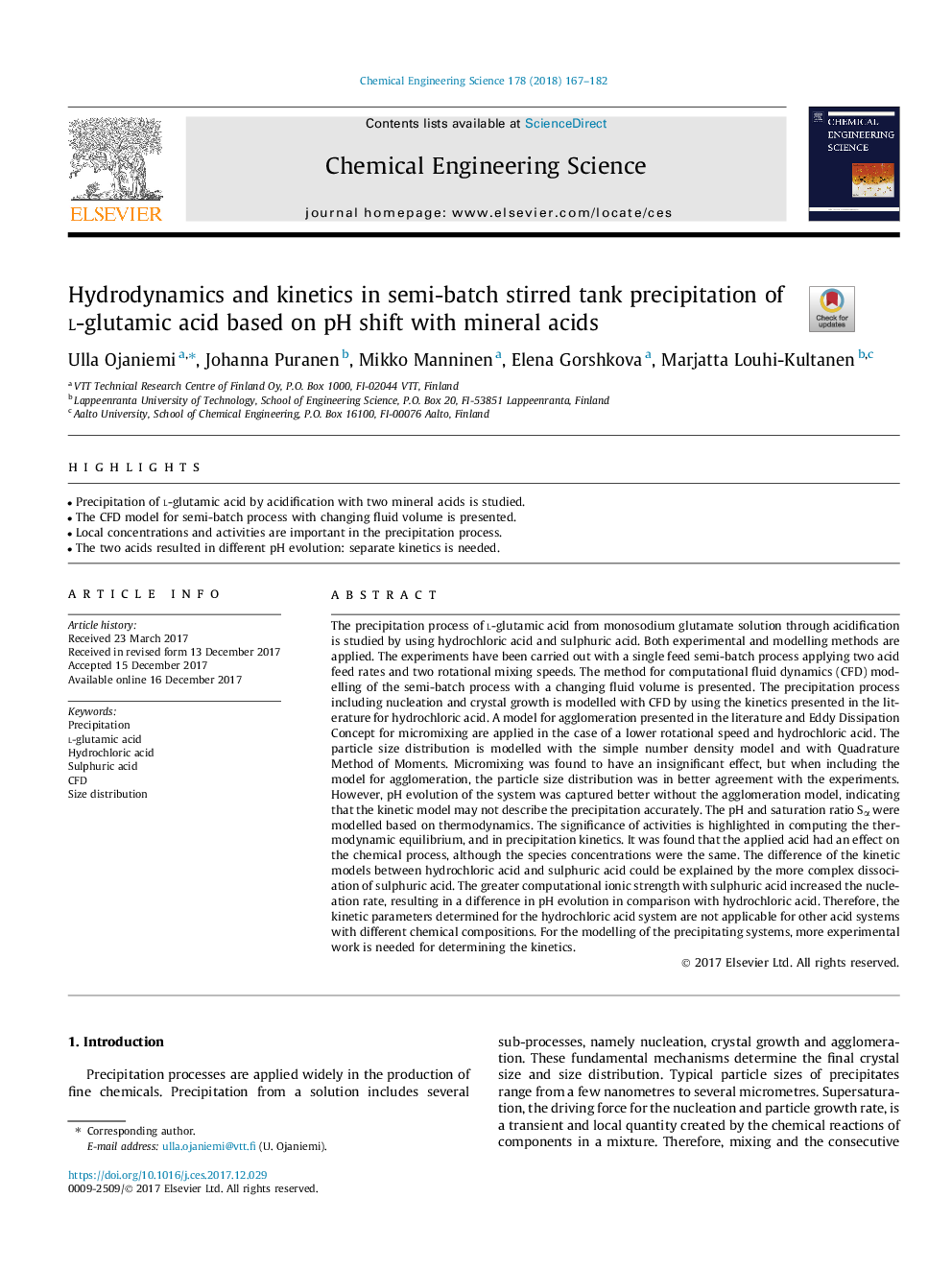| Article ID | Journal | Published Year | Pages | File Type |
|---|---|---|---|---|
| 6588716 | Chemical Engineering Science | 2018 | 16 Pages |
Abstract
The precipitation process of l-glutamic acid from monosodium glutamate solution through acidification is studied by using hydrochloric acid and sulphuric acid. Both experimental and modelling methods are applied. The experiments have been carried out with a single feed semi-batch process applying two acid feed rates and two rotational mixing speeds. The method for computational fluid dynamics (CFD) modelling of the semi-batch process with a changing fluid volume is presented. The precipitation process including nucleation and crystal growth is modelled with CFD by using the kinetics presented in the literature for hydrochloric acid. A model for agglomeration presented in the literature and Eddy Dissipation Concept for micromixing are applied in the case of a lower rotational speed and hydrochloric acid. The particle size distribution is modelled with the simple number density model and with Quadrature Method of Moments. Micromixing was found to have an insignificant effect, but when including the model for agglomeration, the particle size distribution was in better agreement with the experiments. However, pH evolution of the system was captured better without the agglomeration model, indicating that the kinetic model may not describe the precipitation accurately. The pH and saturation ratio Sα were modelled based on thermodynamics. The significance of activities is highlighted in computing the thermodynamic equilibrium, and in precipitation kinetics. It was found that the applied acid had an effect on the chemical process, although the species concentrations were the same. The difference of the kinetic models between hydrochloric acid and sulphuric acid could be explained by the more complex dissociation of sulphuric acid. The greater computational ionic strength with sulphuric acid increased the nucleation rate, resulting in a difference in pH evolution in comparison with hydrochloric acid. Therefore, the kinetic parameters determined for the hydrochloric acid system are not applicable for other acid systems with different chemical compositions. For the modelling of the precipitating systems, more experimental work is needed for determining the kinetics.
Related Topics
Physical Sciences and Engineering
Chemical Engineering
Chemical Engineering (General)
Authors
Ulla Ojaniemi, Johanna Puranen, Mikko Manninen, Elena Gorshkova, Marjatta Louhi-Kultanen,
